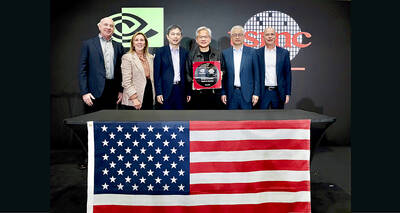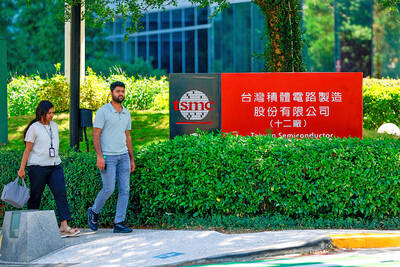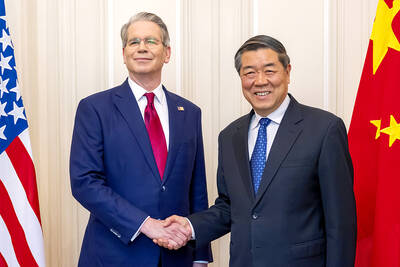US auto giant General Motors (GM), battling to bolster sales at home after emerging from bankruptcy, on Wednesday predicted its sales in China this year would rise by more than 40 percent year-on-year.
The prediction came as GM and its Chinese partners said sales last month soared 112.7 percent year-on-year to 152,365 units — the latest in a series of single-month records stretching back to January.
“We are now looking at [an overall China] market of 11.5 [million] to 12 million vehicles, up from 9.1 million units last year,” GM China Group president and managing director Kevin Wale said in a statement. “We expect GM sales for the year as a whole to rise by more than 40 percent from 2008.”
Sales in China for the first eight months of this year hit 1,111,401 units, a 49.6 percent increase over the same period last year, GM said.
At the same time in the US, GM’s biggest market, sales last month dropped 20 percent and year-to-date sales fell 35 percent to 1.4 million vehicles.
Demand for its Buick and Chevrolet models helped Shanghai GM, a joint venture with the Shanghai Automotive Industry Corporation, post an all-time monthly sales record of more than 63,300 units last month, the company said.
Buick, a struggling brand elsewhere that is popular among China’s middle class, saw sales rise 102.8 percent year-on-year last month with more than 38,900 units sold, the company said.
Meanwhile, Chevrolet sales in China hit an all-time monthly high of more than 23,770 vehicles sold, up 99.4 percent year-on-year, GM said.

RECYCLE: Taiwan would aid manufacturers in refining rare earths from discarded appliances, which would fit the nation’s circular economy goals, minister Kung said Taiwan would work with the US and Japan on a proposed cooperation initiative in response to Beijing’s newly announced rare earth export curbs, Minister of Economic Affairs Kung Ming-hsin (龔明鑫) said yesterday. China last week announced new restrictions requiring companies to obtain export licenses if their products contain more than 0.1 percent of Chinese-origin rare earths by value. US Secretary of the Treasury Scott Bessent on Wednesday responded by saying that Beijing was “unreliable” in its rare earths exports, adding that the US would “neither be commanded, nor controlled” by China, several media outlets reported. Japanese Minister of Finance Katsunobu Kato yesterday also

Jensen Huang (黃仁勳), founder and CEO of US-based artificial intelligence chip designer Nvidia Corp and Taiwan Semiconductor Manufacturing Co (TSMC, 台積電) on Friday celebrated the first Nvidia Blackwell wafer produced on US soil. Huang visited TSMC’s advanced wafer fab in the US state of Arizona and joined the Taiwanese chipmaker’s executives to witness the efforts to “build the infrastructure that powers the world’s AI factories, right here in America,” Nvidia said in a statement. At the event, Huang joined Y.L. Wang (王英郎), vice president of operations at TSMC, in signing their names on the Blackwell wafer to

‘DRAMATIC AND POSITIVE’: AI growth would be better than it previously forecast and would stay robust even if the Chinese market became inaccessible for customers, it said Taiwan Semiconductor Manufacturing Co (TSMC, 台積電) yesterday raised its full-year revenue growth outlook after posting record profit for last quarter, despite growing market concern about an artificial intelligence (AI) bubble. The company said it expects revenue to expand about 35 percent year-on-year, driven mainly by faster-than-expected demand for leading-edge chips for AI applications. The world’s biggest contract chipmaker in July projected that revenue this year would expand about 30 percent in US dollar terms. The company also slightly hiked its capital expenditure for this year to US$40 billion to US$42 billion, compared with US$38 billion to US$42 billion it set previously. “AI demand actually

RARE EARTHS: The call between the US Treasury Secretary and his Chinese counterpart came as Washington sought to rally G7 partners in response to China’s export controls China and the US on Saturday agreed to conduct another round of trade negotiations in the coming week, as the world’s two biggest economies seek to avoid another damaging tit-for-tat tariff battle. Beijing last week announced sweeping controls on the critical rare earths industry, prompting US President Donald Trump to threaten 100 percent tariffs on imports from China in retaliation. Trump had also threatened to cancel his expected meeting with Chinese President Xi Jinping (習近平) in South Korea later this month on the sidelines of the APEC summit. In the latest indication of efforts to resolve their dispute, Chinese state media reported that